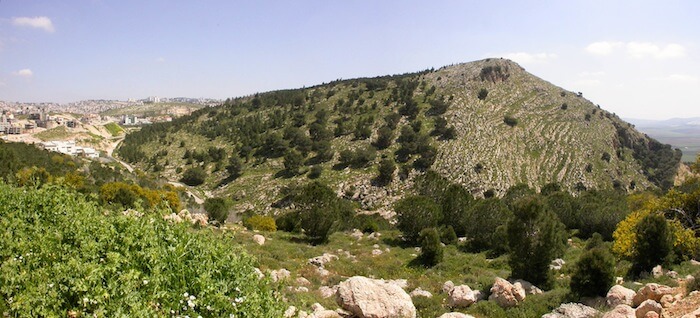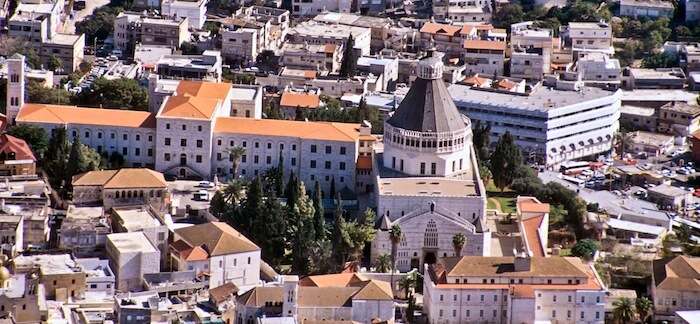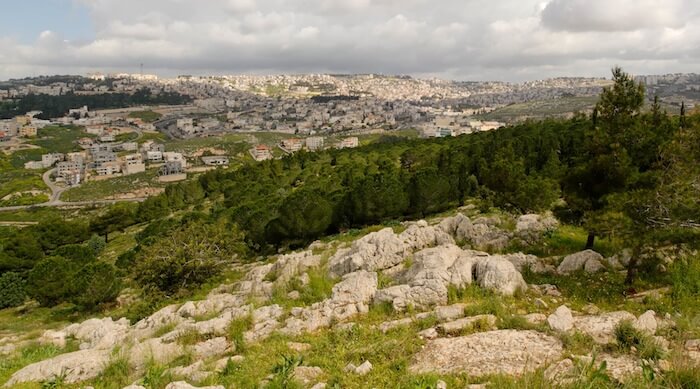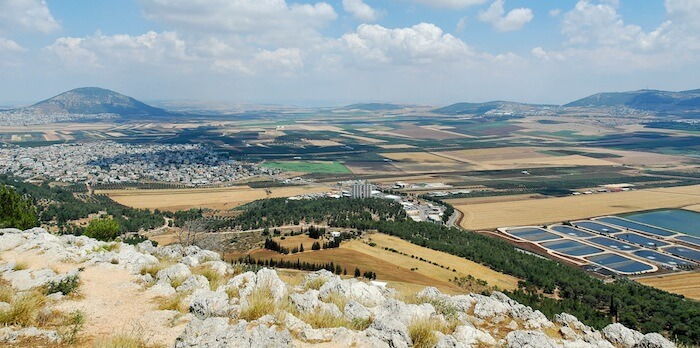Not many people can say they grew up on a hill that overlooked the battlefields of history. But Jesus could.
Jesus’ hometown sat off the beaten path and high on a ridge that overlooked the International Highway and the prominent Jezreel Valley.

(Photo: Nazareth Mount of Precipitation. Courtesy of the Pictorial Library of Bible Lands)
The gospels tell us Nazareth rested on a hill with a formidable precipice (Luke 4:29). From here Jesus cold see the battles of Israel’s history.
The city’s name likely comes from the Hebrew term netzer, meaning “branch” or “shoot.” Some scholars believe this represents the faith of those Jews who returned from exile. Their hope focused on the coming Messiah, the “righteous Branch” of David, promised by the prophet Jeremiah (Jeremiah 23:5; 33:15).
But when He did finally show up, they tried to throw Him over the cliff.
Nazareth Today
Today, the residents of Nazareth represent very distinct people groups.
- The older part the city includes communities of Christian and Muslim Palestinians.
- The newer section, called Nazareth Illit (meaning “Upper Nazareth,” as in elevation), serves as the Jewish district.
The modern city has swallowed the ancient one. Ancient ruins are virtually non-existent. I shot this video from a helicopter over Nazareth. It begins over the Nazareth Ridge and ends over the Church of the Annunciation.
The Church of the Annunciation, completed in 1969, replaced the earlier Franciscan church of 1730. The Franciscans had built over the ruins of a 12th-century Crusader church and a 5th-century Byzantine church.

(Photo: Nazareth Church of Annunciation. Courtesy of the Pictorial Library of Bible Lands)
The modern structure represents the largest church building in the Middle East and remains the focal point of Nazareth’s tourism. Why so significant? Inside, the Cave of the Annunciation marks the traditional location where the angel Gabriel announced to Mary that she would give birth to the Messiah (Luke 1:26-38).
For the adventurous visitor, a 40-mile trail now stretches from Nazareth to Capernaum. Called the “Jesus Trail,” the path allows visitors to walk the path that represented one Jesus’ most significant geographical transitions.
The “Nazareth Village”
A new tourist site called Nazareth Village offers visitors a glimpse into what first-century Nazareth may have looked like in Jesus’ day. It’s a great place to take pictures.
- Dressed in period costume, staff members tend their flocks, harvest their wheat, spin their fabric on looms, and tool their wood in the carpenter’s shop (my favorite spot).
- The replica of Nazareth’s first-century synagogue reveals how the innovative design of the building offered cool temperatures on hot days.
Nazareth in Jesus’ Day
When Jesus returned to His hometown of Nazareth, He found a warm welcome at the synagogue—that is, until He preached. The young carpenter claimed to have fulfilled the messianic prophecy He had just read from Isaiah 61:1–2 (Luke 4:16-30). The hearers took offense that the local-yokel Jesus would dare to be remarkable. After all, wasn’t He the guy who built their dining tables?
The townspeople were so enraged that they took Jesus to the edge of the Nazareth Ridge and wanted to fling Him off into the Jezreel Valley. But He passed through their midst and departed. You think that made for awkward subsequent holiday gatherings?

(Photo: Nazareth as seen from the Nazareth Ridge. Courtesy of the Pictorial Library of Bible Lands)
In their attempts to discredit Jesus, the Pharisees claimed, “no prophet arises out of Galilee” (John 7:52). But the prophet Jonah came from Gath-hepher, located right beside Jesus’ hometown of Nazareth (2 Kings 14:25).
Nazareth—A View to the Past and the Future
The Nazareth Ridge, near what is called “Mount Precipice,” offers beautiful overlook on the ridge that encircles Nazareth, and it provides a view for many miles in three directions.
Like any other boy growing up in Nazareth, Jesus would have known the ins and outs of the hills that surrounded His village. Of course, He would have seen the view from this ridge many times. On the valley floor below, caravans of travelers and the war machines of history had passed.

(Photo: Jezreel Valley and Mount Tabor from Nazareth ridge. Courtesy of the Pictorial Library of Bible Lands)
From this one location, many battles have marked the pages of Scripture.
- To the immediate east, Mount Tabor rises from the valley floor and echoed of the armies of Deborah and Barak as they defeated Sisera (Judges 4-5).
- In the distance south, between the Hill of Moreh and Mount Gilboa, Gideon faced off against the Midianites (Judges 6-8).
- On Gilboa itself, the tragic life of King Saul came to an end (1 Samuel 31).
Squinting southwest through the haze, a visitor can spy Tel Megiddo in the distance—the site of many battles past. But it also will serve as the place of gathering for the future battle of Armageddon (Revelation 16:16).
As Jesus stood there, it’s easy to imagine that He would have envisioned all the history that stretched out before Him—and the future battle He will wage as a Victor.
How could He not have envisioned it?
Tell me what you think: Have you ever tried to share with family or your hometown? To leave a comment, just click here.
